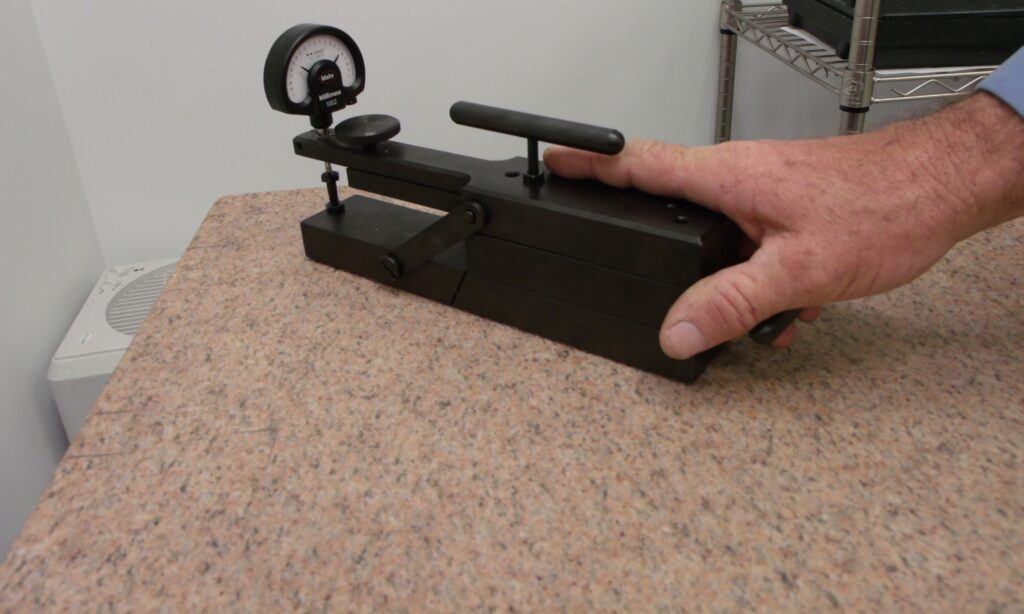
Precision in engineering is not just about sophisticated machines and cutting-edge software. Sometimes, it’s the simplest tools, like the granite surface plates, that make the biggest difference. These seemingly unassuming pieces of equipment have been the cornerstone of accuracy in engineering for years, and continue to be so even in the face of rapid technological advances.
Table of Contents
What Are Granite Surface Plates?

Source: vanderzielmachinery.com
Granite surface plates, also known as true plane surfaces, are essentially flat plates made of granite. These plates provide a standardised, ultra-precise reference surface for taking engineering measurements. Whether it’s inspecting machined parts, verifying dimensions, or facilitating accurate linear measurements, granite surface plates are indispensable.
The Role of Granite Surface Plates in Engineering
In an engineering setup, every measurement hinges on a precise reference point. Granite surface plates serve as the most reliable base for this purpose. They are used extensively in various measuring machinery and are considered the go-to base for height gauges.
The surface plates are manufactured in several sizes and grades, depending on the level of accuracy required. In line with the British Standard BS 817 (2008), these plates are classified into four grades:
- Grade 0: Ideal for laboratory environments requiring high accuracy.
- Grade 1: Used for general inspection services.
- Grade 3: Suitable for workshops where strict tolerance levels are not essential.
- Grade 4: These are the least accurate and rarely used for engineering measurements.
A Glimpse into the History of Surface Plates
The advent of the 19th-century Industrial Revolution marked the beginning of mass production, necessitating standardisation. Henry Maudsley, a blacksmith turned machine tool inventor, recognised this need and introduced the concept of a true plane surface for measurement, thus paving the way for the first surface plates.
Later, Crown Windley, now a part of Eley Metrology, established an industry standard for surface plates. Initially, cast iron was the material of choice for these plates. However, the necessity of war and the subsequent scarcity of cast iron led to the exploration of alternative materials like granite. Wallace Herman, a monument and metal shop owner in America, discovered the suitability of granite for making surface plates.
Granite, being a hard, dense, and uniform material, resistant to water and low in thermal expansion, proved to be an ideal alternative. Its durability meant that even if it got chipped, the surrounding area remained unaffected, thus preserving the flatness of the surface.
Granite Surface Plate Calibration and Maintenance

Source: premierscales.com
When it comes to surface plates, accuracy is key. In the UK, the British Standard BS 817:2008 provides specifications and tolerances for the construction of surface plates. According to this standard, surface plates are classified into various grades based on their accuracy.
However, over time and with continued use, the flatness of a surface plate can be affected. Hence, regular calibration is crucial. Moreover, adopting good usage and care practices, such as not using the plate as a shelf or bench, cleaning it frequently, rotating it (if possible), and spreading the use over different areas of the plate can help maintain its flatness.
Significance of Surface Plates in Mechanical Engineering
Accurate measurements are crucial for reliable engineering outcomes. In this context, surface plates play a pivotal role. However, their importance is on par with all the other machinery and software used in the process. Together, they ensure the production of parts that meet the required standards.
Surface Plates: Applications Beyond Engineering
Surface plates are not just confined to engineering. They find wide applications in various fields where precision is paramount. In the aerospace industry, for instance, surface plates facilitate precise measurements to ensure adherence to construction and testing specifications. They are also used in research and development, calibration of measuring instruments, and quality assurance processes across industries.
Taking Care of Granite Surface Plates
The preservation of granite surface plates is heavily influenced not only by formal calibrations but also by the practices adopted in workshops. These maintenance procedures are key to maximising each calibration and extending the life of the surface plate.
Granite surfaces are prevalent in households, often seen in kitchens or bathrooms. In a similar vein, some workshops utilise granite surface plates for storage or as a place to rest food and beverages, despite their intended metrological use.
When a granite surface plate is used as a table or a countertop, it becomes susceptible to wear and staining. This leads to inaccurate measurements and flawed products due to the worn-out surfaces, while stains can cause contamination. To maintain their calibration and ensure the quality of measurements, it’s recommended that granite surface plates are covered when not in use.
Since workshops invest in an entire surface plate, it’s logical to use every part of it. Continuously using the same spot on a granite surface plate contributes to rapid wear and tear.
Below are the key rules to follow to prolong the life of your granite surface plates:
- Keep the plate clean.
- Cover it when not in use.
- Rotate the plate periodically, if possible.
- Do not place anything on the plate except the items to be measured.
- Avoid overusing the same spot on the plate.
Granite Surface Plate Calibration Services

Source: metrology.news
Given the critical role that surface plates play in precision measurements, it’s important to choose a reliable calibration service provider. Companies like Eley Metrology, with decades of experience in manufacturing granite products, offer calibration and resurfacing services with a keen eye for accuracy and detail.
They utilise high-quality equipment and perform calibrations on-site or in their UKAS-certified lab. Their granite products offer superior wear resistance, low porosity, and smooth movement, ensuring accurate measurements.
The Bottom Line
Granite surface plates, with their unmatched precision and durability, continue to be the unsung heroes of modern manufacturing. By understanding their historical significance, appreciating their modern applications, and recognising the importance of regular calibration and maintenance, we can ensure their continued contribution to engineering and other precision-demanding fields.







